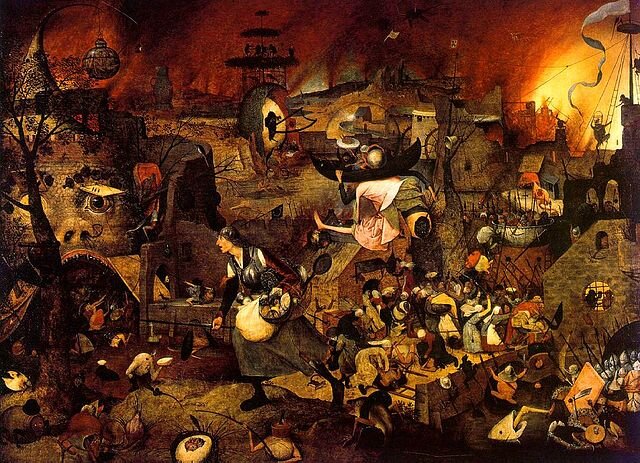Signs of Monster Population Density

Some organisms have such an impact on their surroundings that even when they are unseen, their presence is obvious. This is found as regional effects in the 5th edition Monster Manual, the Morningstar setting and some other supplements (though those are the best I have read). I wanted to come up with a simplified version that takes into account population densities so that “lesser” magical creatures could not only impact their surroundings, one could tell how many there are nearby just by paying attention to the environment. That and examples that are species specific. The numbers in my examples show high, very high and impossible densities. The last isn’t for those found in the wilds, but rather in zoos, breeding cages and other purposeful collections.
Chimeras per 100 square miles
5 Fire resistant plants spontaneously generate and their herbivores migrate in from other locations.
10 Obsidian boulders result from the soil being melted multiple times. Amalgams (creatures that are formed by other creatures such as the owlbear and gryphon) are common births and hatchings. They will breed true even if the chimeras are slain of driven away.
30+ The area is a blasted wasteland that draws chaos and fire elementals. They leave and the land takes decades to centuries to heal if the chimeras are slain or driven away.
Displacer Beasts per 100 square miles
10 Many random objects gain Mirror Images. If dispelled or destroyed, they come back in 1d6 rounds.
25 Shadow Monsters form, drawn from the shadows and bits of reality of local creatures. They fade in and out of existence as the displacement fields interact.
50 Random Dimension Door effects occur throughout the affected area. Attempts to Teleport in or out of the area result in random arrival locations as the magic is displaced.
100+ The planar membrane is thinned and torn, resulting in Gates to random planes and strange planar traits that chessboard the area.
Basilisks per 100 square miles
10 Stones take the appearance of creatures. Outcroppings and stone walls look like mosaics of many intertwined creatures.
25 The air becomes more dense and all creatures in the area are effectively Slowed, no save.
50+ Both the stones that are shaped like creatures and petrified victims animate, becoming in effect earth elementals. They are not violent unless attacked first and then all in the line of sight will react.
Gibbering mouthers per square mile
5 The range for the gibbering sonic effect doubles.
10 The ground for the whole area softens.
20+ Walls collapse as they soften. Stone starts to become gibbering mouther flesh, though without the eyes or mouths. These appear when creatures die from any reason while into contact with the flesh. It then breaks off and forms a, rather small new mouther that can hunt on its own or merge with other mouthers that it encounters.
Cryohydras per 100 square miles
5 The air temperature drops 20 degrees and bodies of water gain skim ice at night even if the temperature is still above freezing.
10 The air temperature never reaches above freezing. Weird snowflakes in the shape of symbols of cold and ice fall. Ice elementals appear.
20+ The air thins as it freezes, forming mounds of strange ice. Temperatures never reach above 100 below. The edges of the area are always windy as new air is drawn in.
Tendriculoses (?) per 5 square miles
5 Vines and forbs start to move on their own. Most are harmless and those that are not can only Entangle.
10 All plants are in motion, many of which dig themselves up and wander around. Prone creatures may be trampled.
50+ Plants merge with the tendriculoses into massive mounds of vegetation that overrun and trample all small creatures and structures. The land left behind is bare soil which soon sprouts grass, trees and forbs to start the cycle over again.
Not all magical creatures produce such signs, but those that do can be quite impressive.
